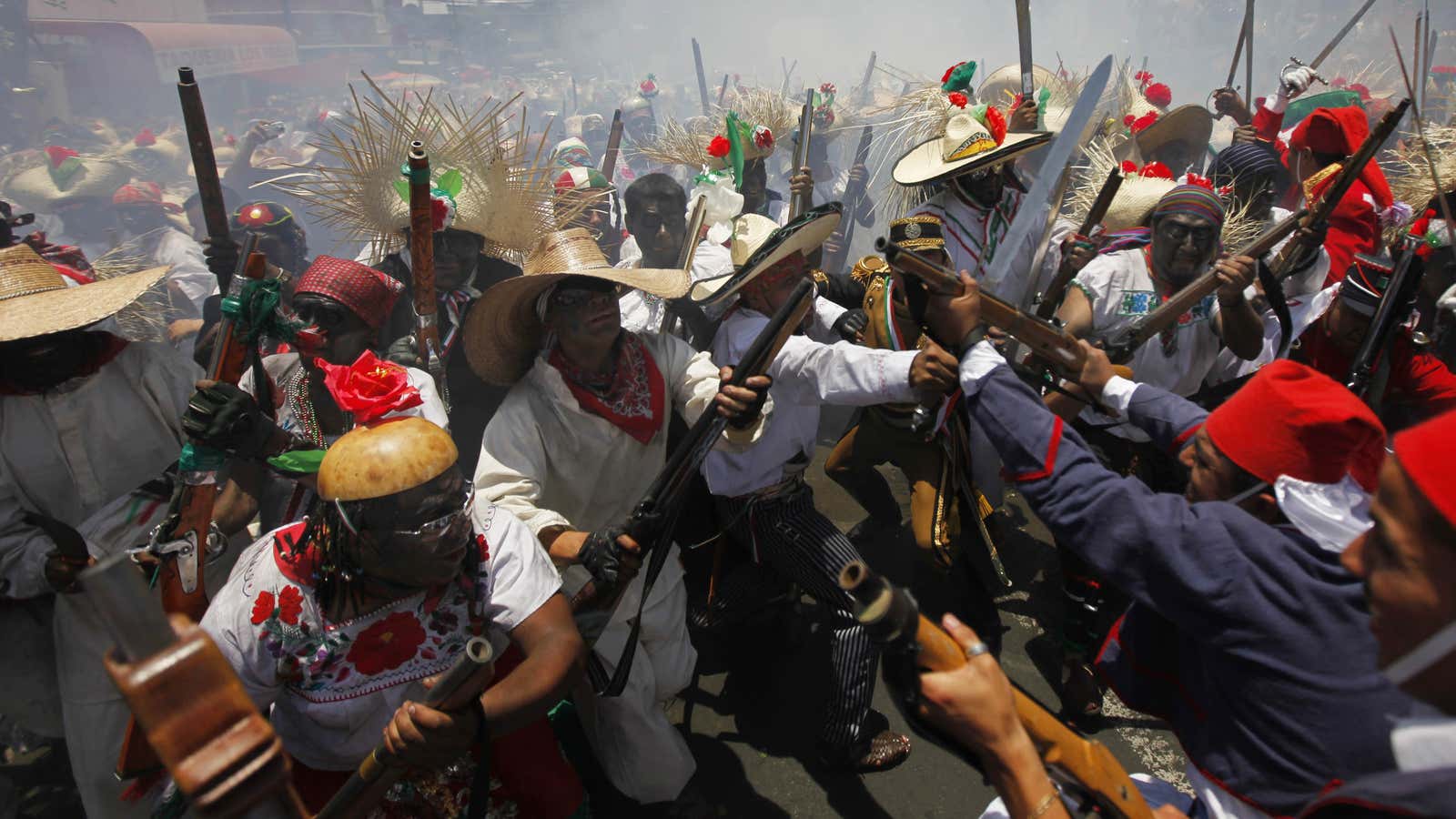Drinko de Mayo, Cinco de Drinko, Cuatro de Cinco—not especially majestic nicknames for a holiday meant to memorialize a Mexican military victory over invading French forces. But despite a modern-day reputation for debauchery, Cinco de Mayo was originally a celebration of military valor and anti-colonialism—perhaps not the kind of holiday best summed up by a piñata and a cold one.
On May 5, 1862, on a field near the city of Puebla, the comparably under-equipped Mexican army successfully repelled the forces of Napoleon III. Although Mexico eventually lost the war—known by a number of names, including the “French intervention,” the Maximillian Affair, and the Franco-Mexican War—the date has since become a point of pride for Mexicans and Mexican-Americans, who refer to it as El Día de la Batalla de Puebla, or the Day of the Battle of Puebla.
The complicated significance of this battle has since been lost, of course, especially for those living north of the US border. For many of these partiers, Cinco de Mayo has instead become an occasion to overindulge.
Like other nationality-specific holidays, Cinco de Mayo is fertile ground for casual racism in the US. It’s a once-a-year opportunity for inebriated white people to don sombreros and serapes, and pencil Zorro-esque mustaches onto upper lips. What makes the appropriation of Cinco de Mayo and its various cultural trappings all the more infuriating is that it is a holiday celebrating a rare instance when a colonized people (Mexicans) drove out a colonizing force (the French).
But there is a possible silver lining to all of this ignorant merrymaking.
Similar to Cinco de Mayo in both its ethnically-specific origins and reputation for overindulgence, St. Patrick’s Day was originally a Catholic feast day celebrated on the anniversary of the death of Ireland’s patron saint. The holiday is often said to be more passionately celebrated stateside than on its native island, too.
In some ways, the modern bastardization of St. Patrick’s Day mirrors the integration of the Irish community into mainstream American culture. Irish-American culture as portrayed by St. Patrick’s Day customs and decor is hardly ideal, but it does provide an outlet for expressions of Irish-American pride. Perhaps the same can be said for Cinco de Mayo—to an extent.
Cinco de Mayo racism certainly won’t precipitate greater understanding of or respect for Mexican and Chicano culture. But its increasing popularity might be a sign of disintegrating cultural and racial barriers. Here’s hoping that, on Cinco de Mayo in 2055, Mexican Americans will enjoy the same level of cultural inclusion Irish Americans enjoy today (if not sooner).
So, if you simply must toast on Cinco de Mayo, raise your salted rim to that.




